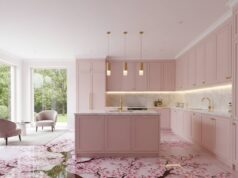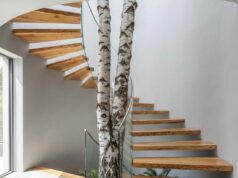In a world where interior design continually pushes the boundaries between nature and modernity, one of the most striking and unexpected innovations to emerge is the concept of Insect Doorknobs. These transparent door knobs, which encapsulate live insects in an elegant display, have become a symbol of futuristic decor that marries aesthetics with a deep appreciation for natural life. This article will explore every facet of the Insect Doorknobs phenomenon, examining their design, history, cultural impact, ecological implications, and the technology behind these fascinating artifacts. As we journey through this in-depth analysis, it becomes clear that Insect Doorknobs represent more than just a decorative element—they are a conversation piece that challenges our perceptions of beauty, nature, and innovation.
The Origins of Insect Doorknobs
A Fusion of Art and Nature
The idea behind Insect Doorknobs is as unconventional as it is intriguing. Born out of a desire to blur the lines between the artificial and the natural, the concept was first introduced by avant-garde designers seeking to capture the ephemeral beauty of nature in everyday objects. The notion of incorporating living insects inside transparent doorknobs taps into a long tradition of biomimicry in design—a field that seeks to emulate the aesthetic and functional aspects of nature. The designer’s ambition was to create a product that is both functional and thought-provoking, and that stimulates dialogue about the relationship between humans and the natural world.
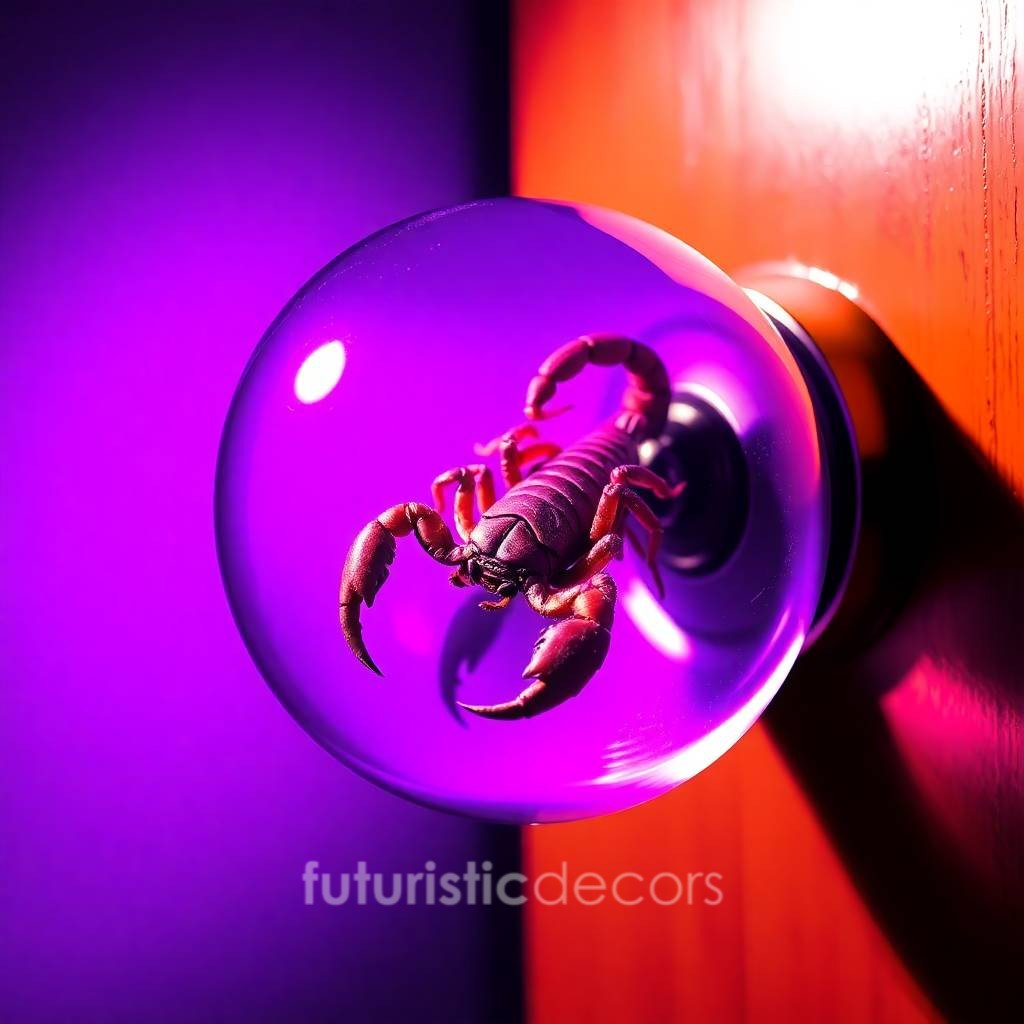
Historically, decorative objects have often drawn inspiration from nature. From Victorian-era glass paperweights featuring insects to contemporary art installations that celebrate biodiversity, the natural world has long been a muse for creative expression. In this lineage, Insect Doorknobs represent a modern twist—merging traditional naturalistic imagery with cutting-edge materials and technology.
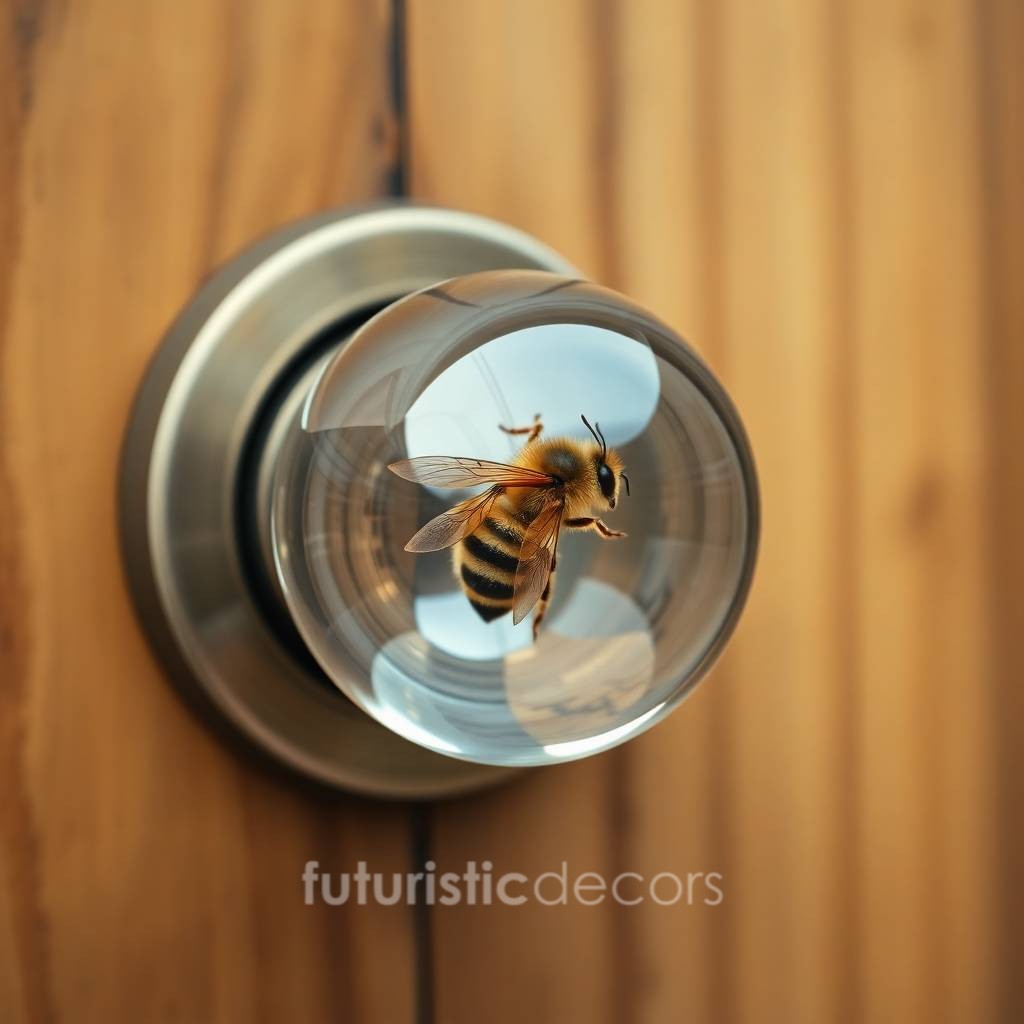
Technological and Material Innovations
Creating Insect Doorknobs involves sophisticated manufacturing processes that integrate modern materials such as high-grade transparent polymers, precision molding techniques, and micro-environmental controls. These doorknobs are designed not only to be visually striking but also to maintain a safe, controlled habitat for the insects within. Engineers and biologists collaborate closely to ensure that the insects can survive within their miniature ecosystems without compromising their health.
The materials used in these doorknobs are selected for their durability, optical clarity, and biocompatibility. The transparent casing is typically made from acrylic or polycarbonate, materials known for their resistance to shattering and their ability to mimic the clarity of glass. The integration of miniature habitats within the knob itself includes elements like tiny water reservoirs, nutrient sources, and even micro-air circulation systems to simulate a natural environment. This complex interplay between design and biology has opened new frontiers in what might be termed “living decor.”
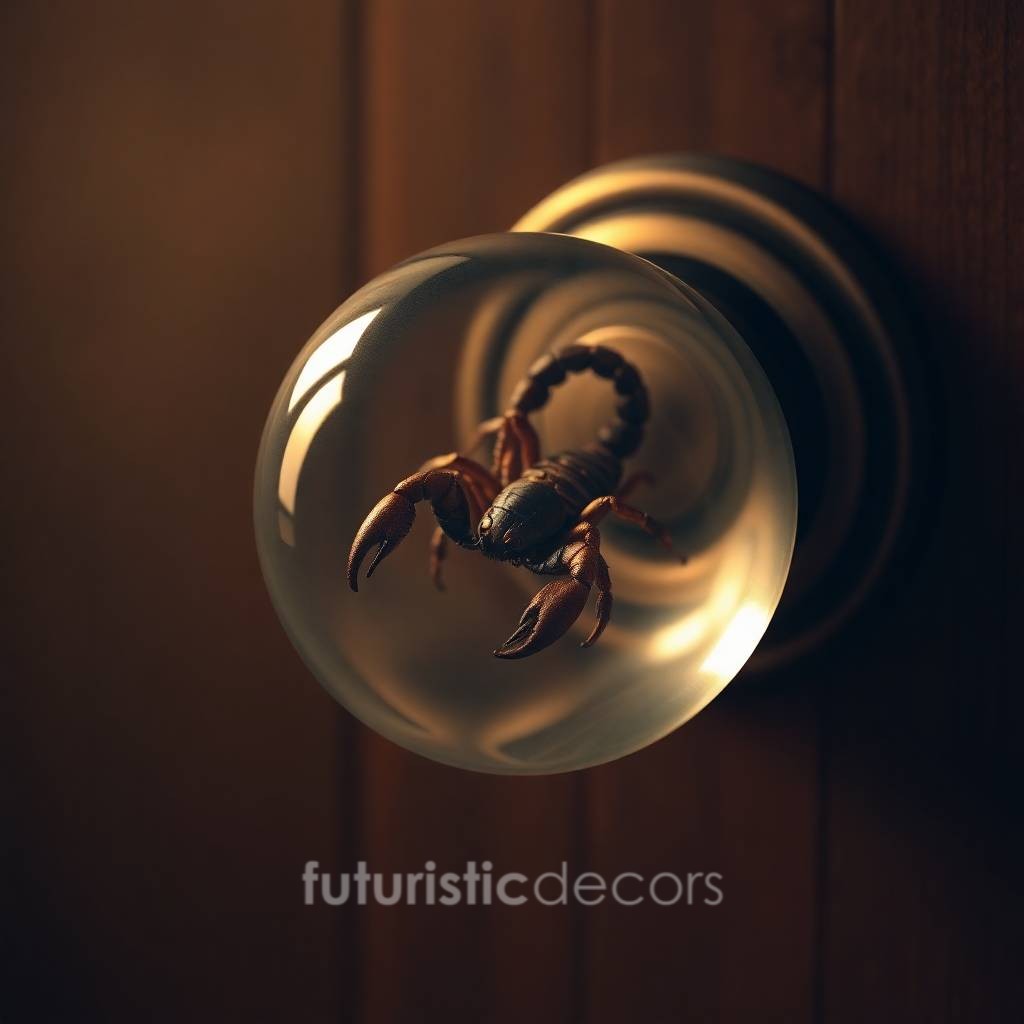
The Aesthetics and Symbolism of Insect Doorknobs
Visual Impact and Design Philosophy
At first glance, Insect Doorknobs captivate with their surreal beauty. The transparent casing offers a window into a miniature ecosystem, where insects—often seen as symbols of transformation and resilience—perform their daily rituals in slow motion. This captivating display forces observers to reconsider their preconceptions about insects, which are frequently associated with decay or nuisance. Instead, they are presented as living, breathing works of art that contribute to a dynamic and evolving narrative of nature.
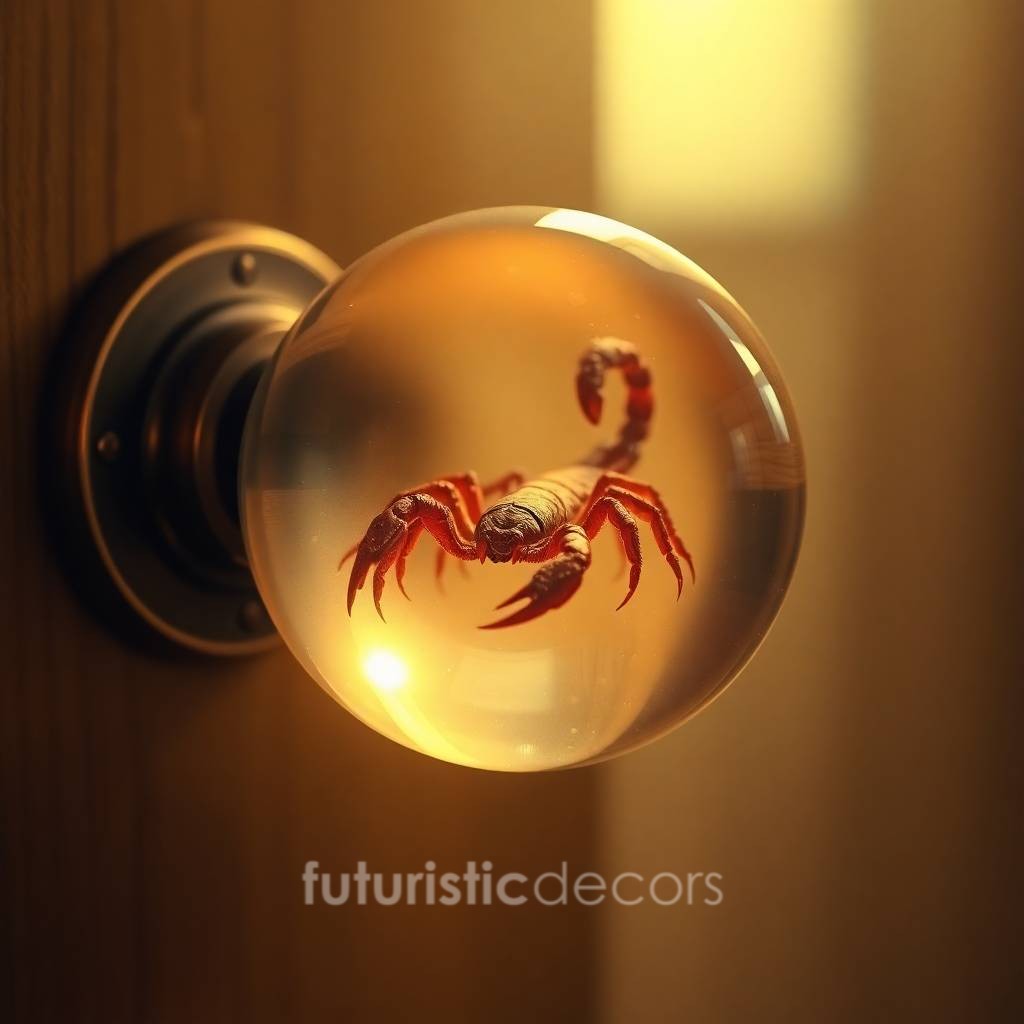
Designers of Insect Doorknobs are particularly meticulous about the placement and type of insect chosen. Different species are selected for their unique visual characteristics, behavior, and symbolism. For instance, butterflies and dragonflies are often preferred for their vibrant colors and graceful flight, whereas beetles and ants might be chosen for their intriguing physical forms and industrious nature. The choice of insect can profoundly influence the design’s overall aesthetic, imbuing the doorknob with layers of meaning that extend far beyond mere functionality.
Symbolic Interpretations
In many ways, the Insect Doorknob can be seen as a metaphor for transformation and the coexistence of life and technology. Insects are emblematic of metamorphosis, resilience, and the cyclical nature of life. By embedding them in everyday objects, designers encourage viewers to appreciate the beauty of these creatures and to reflect on the delicate balance between human-made environments and the natural world.
Moreover, the use of transparent materials symbolizes openness and a clear view into hidden worlds. It invites the observer to see beauty where it might otherwise be overlooked. In an era where the boundaries between the digital and the physical are increasingly blurred, Insect Doorknobs serve as a reminder that nature’s wonders can be seamlessly integrated into our daily lives, creating an ongoing dialogue between human innovation and the natural environment.
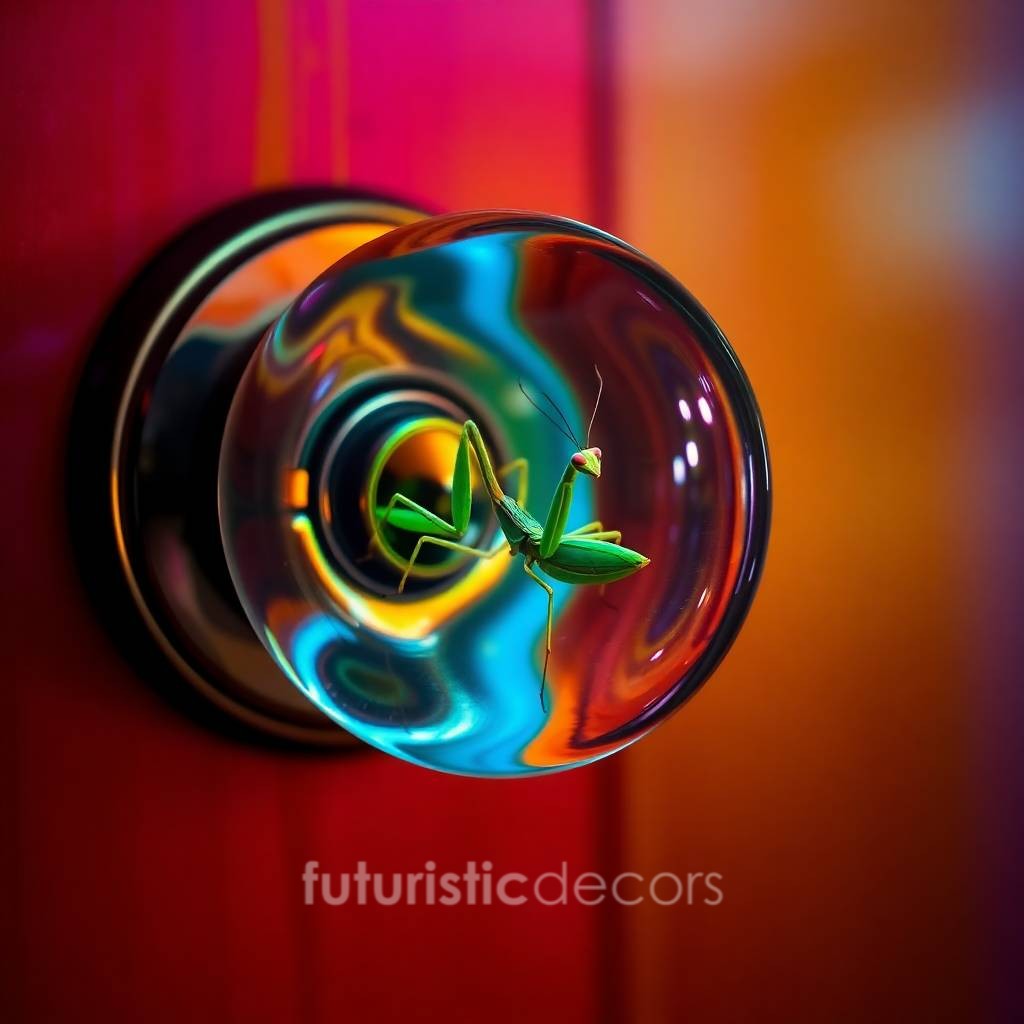
Ecological and Ethical Considerations
Ensuring the Wellbeing of Insects
One of the primary challenges of designing Insect Doorknobs is ensuring that the insects housed within remain healthy and stress-free. Ethical considerations are at the forefront of this innovative design, with designers and biologists working hand-in-hand to create microhabitats that mimic natural conditions as closely as possible. This involves not only providing appropriate nutrition and shelter but also managing environmental factors such as temperature, humidity, and light exposure.
The insects chosen for these doorknobs are often species that are hardy, adaptable, and capable of thriving in confined spaces. Before being enclosed within the doorknob, each insect undergoes a careful assessment to determine its suitability for such an environment. Additionally, regular monitoring and maintenance protocols are established to ensure that the insects continue to thrive over time. Some designs even incorporate removable modules, allowing for routine cleaning and care without disrupting the overall aesthetic.
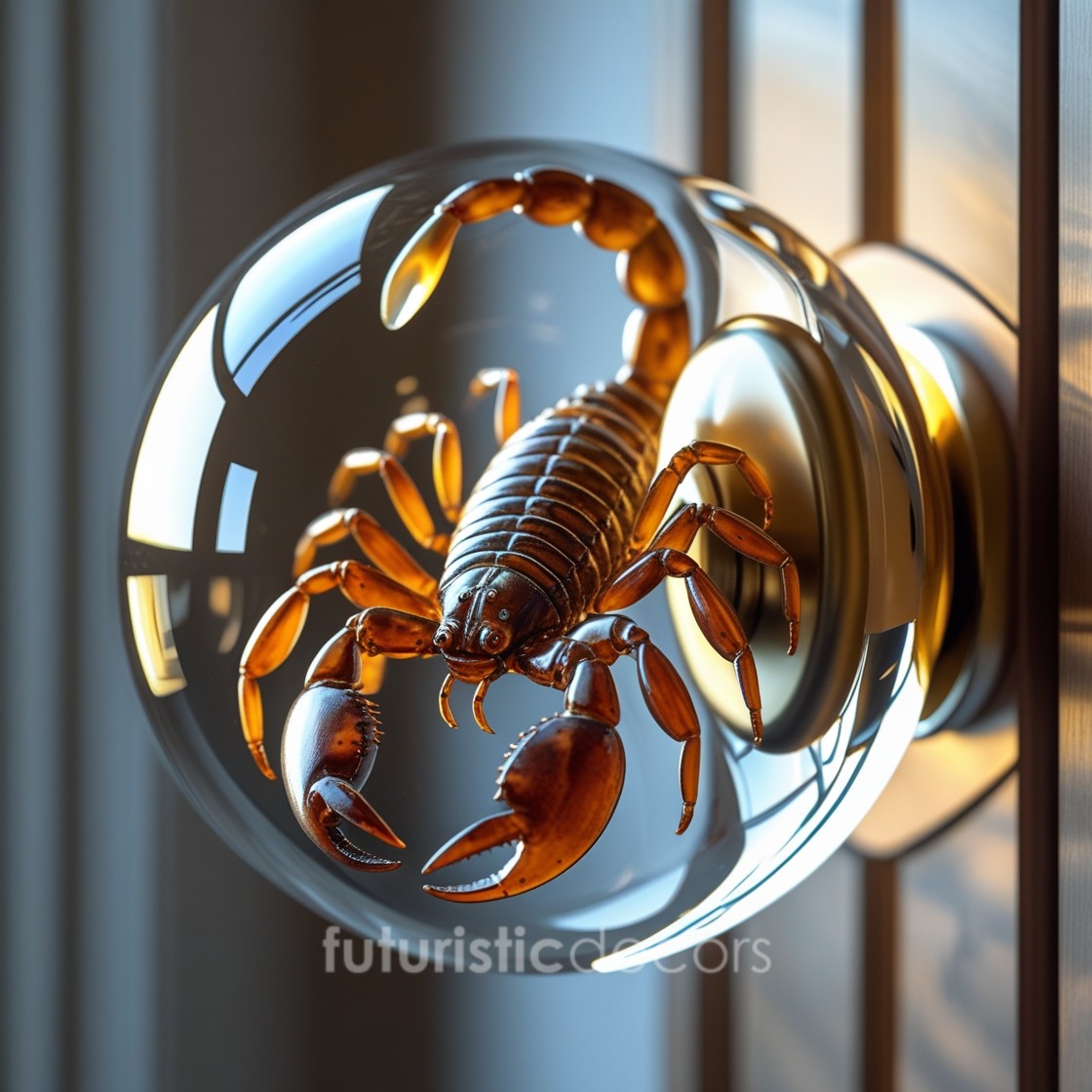
Ethical Debates and Public Perception
The concept of Insect Doorknobs has sparked lively debate among ethicists, animal rights activists, and the general public. Critics argue that confining living creatures in such a manner may be inherently exploitative, reducing them to decorative objects rather than allowing them to live freely. Proponents, however, maintain that when designed and maintained responsibly, these installations can educate the public about the importance of biodiversity and the marvels of natural adaptation.
To address these concerns, designers have implemented strict ethical guidelines and oversight from biological experts. These measures ensure that the insects are not subjected to undue stress and that their living conditions are continually optimized. In many cases, the insects in Insect Doorknobs are not permanently confined but are instead part of a rotational display, allowing for periods of release into their natural habitats.
The public reception of Insect Doorknobs has been mixed yet undeniably passionate. Some see them as a bold and imaginative fusion of art and nature, while others remain skeptical of the ethical implications. This diversity of opinion only adds to the allure and intrigue of the concept, ensuring that Insect Doorknobs remain a topic of conversation in both design and environmental circles.

The Role of Insect Doorknobs in Modern Interior Design
A Statement Piece for Contemporary Spaces
In modern interior design, statement pieces are more than mere decorative objects—they are expressions of identity, taste, and cultural values. Insect Doorknobs have emerged as a particularly compelling statement piece, challenging conventional notions of what constitutes art and beauty. Their transparent, living display serves as a focal point in any room, inviting guests to pause, observe, and engage in conversation.
Interior designers are increasingly incorporating Insect Doorknobs into their projects, not only for their aesthetic appeal but also for the narrative they convey. In spaces ranging from ultra-modern urban apartments to eco-conscious offices, these doorknobs act as a bridge between the sterile, artificial environments of contemporary living and the vibrant, unpredictable world of nature. They remind us that nature can be both fragile and resilient, delicate yet enduring—a perfect counterpoint to the rigidity of modern architectural forms.
Integrating Insect Doorknobs with Other Design Elements
The successful integration of Insect Doorknobs into a living space requires careful planning and a holistic approach to interior design. Here are some key considerations for incorporating these innovative pieces into your decor:
- Lighting: Proper lighting is essential to highlight the intricate details of the insect display. Consider using accent lighting or strategically placed spotlights to enhance the transparent casing and draw attention to the miniature ecosystem within.
- Color Schemes: Neutral or natural color palettes tend to complement the transparent design of Insect Doorknobs. Soft earth tones, muted greens, and light grays provide a subtle backdrop that allows the vibrant life within the doorknob to stand out.
- Furniture and Accessories: To avoid overwhelming the visual impact of the Insect Doorknobs, balance them with minimalist furniture and accessories. Clean lines and uncluttered spaces can help maintain focus on the unique design element.
- Themes: Insect Doorknobs work well in themes that celebrate nature, science, and futurism. They can serve as the centerpiece of a nature-inspired decor or as an intriguing contrast in a high-tech, modern setting.
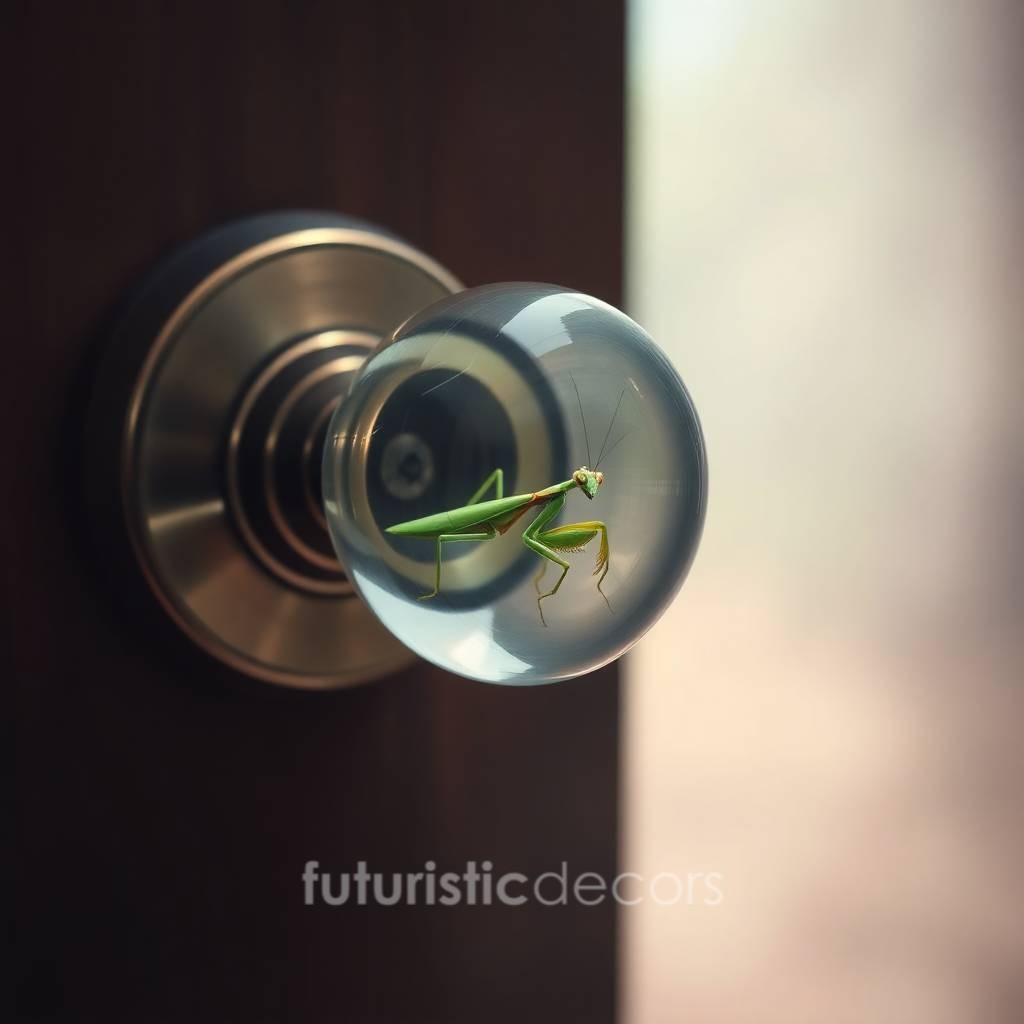
By thoughtfully considering these design elements, homeowners and designers alike can create spaces that are not only visually appealing but also rich in narrative and meaning.
The Science Behind Insect Doorknobs
Engineering a Miniature Ecosystem
At the heart of Insect Doorknobs lies a delicate balance of art and science. Creating a viable habitat within a small, confined space poses significant engineering challenges. The transparent casing must be carefully designed to allow for sufficient light penetration, while also preventing harmful ultraviolet rays from damaging the insects. Engineers employ a combination of computer-aided design (CAD) and material science to develop casings that are both robust and conducive to life.
Micro-environmental controls are an essential aspect of the design. These controls may include miniature heating elements, humidity regulators, and even automated feeding systems to ensure that the insects receive adequate care. Sensors embedded within the doorknob monitor key environmental parameters, such as temperature and humidity, providing real-time data that can be used to adjust the microclimate as needed.
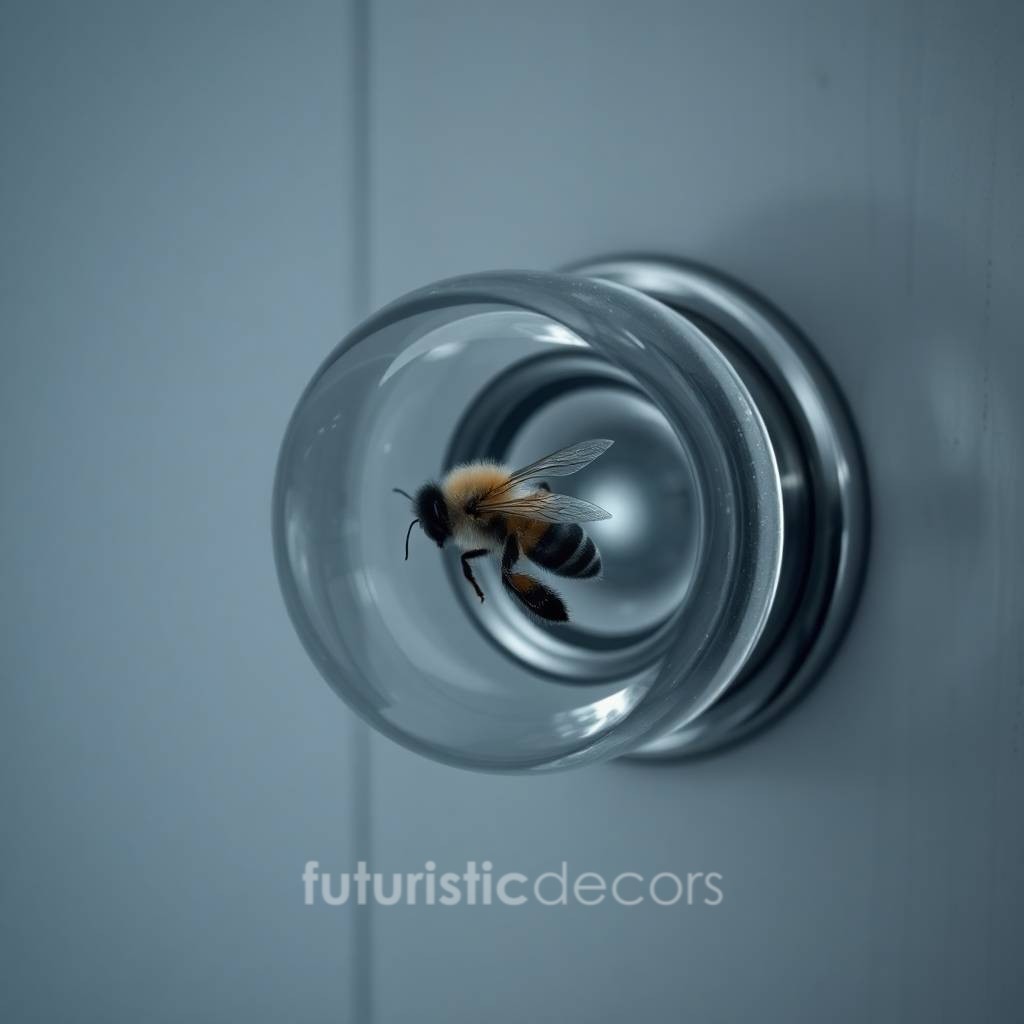
Collaboration Between Disciplines
The successful creation of Insect Doorknobs is a testament to interdisciplinary collaboration. Designers, engineers, and biologists must work in tandem to ensure that the final product is both aesthetically pleasing and biologically viable. In many cases, this involves iterative prototyping, where multiple versions of the doorknob are tested and refined before reaching the final design. The convergence of artistic vision and scientific precision is what makes Insect Doorknobs such a groundbreaking innovation in the world of design.
Refer to buy similar products: Click here
This collaboration extends to the ethical oversight of the project as well. Institutions and independent experts often review the designs to ensure that they meet strict ethical standards for animal welfare. The result is a product that not only dazzles the eye but also respects the integrity of the living creatures it houses.
Cultural Impact and the Future of Insect Doorknobs
Redefining Beauty in Everyday Objects
Insect Doorknobs have the potential to redefine our understanding of beauty in everyday objects. Traditionally, beauty has been associated with perfection, symmetry, and the absence of decay. In contrast, Insect Doorknobs embrace imperfection, the passage of time, and the dynamic nature of life. The inherent unpredictability of the living elements inside the doorknobs challenges the static and often sanitized view of modern decor. Instead, they introduce an element of natural randomness that is both refreshing and evocative.
This shift in perception is part of a broader cultural movement that values authenticity and sustainability over superficial perfection. As more people become aware of environmental issues and the importance of biodiversity, products like Insect Doorknobs resonate on a deeper level. They serve as a reminder that beauty is not a static attribute but a dynamic process—a continuous interplay between life, change, and imperfection.
Influencing Art, Design, and Environmental Discourse
The influence of Insect Doorknobs extends beyond the realm of interior design. Artists and designers have begun to incorporate the concept into various media, creating installations, sculptures, and even performance art that explores themes of transformation, coexistence, and the fragility of life. The visual appeal of a transparent doorknob filled with living insects has captured the imagination of many creative minds, leading to exhibitions and installations in galleries and museums worldwide.
Moreover, Insect Doorknobs have sparked discussions about sustainability and the ethical treatment of all living organisms. As public awareness about environmental issues grows, these innovative designs serve as catalysts for broader conversations about the role of technology in preserving biodiversity and fostering a deeper connection with nature. The dialogue they inspire is as dynamic and layered as the ecosystems they encapsulate.
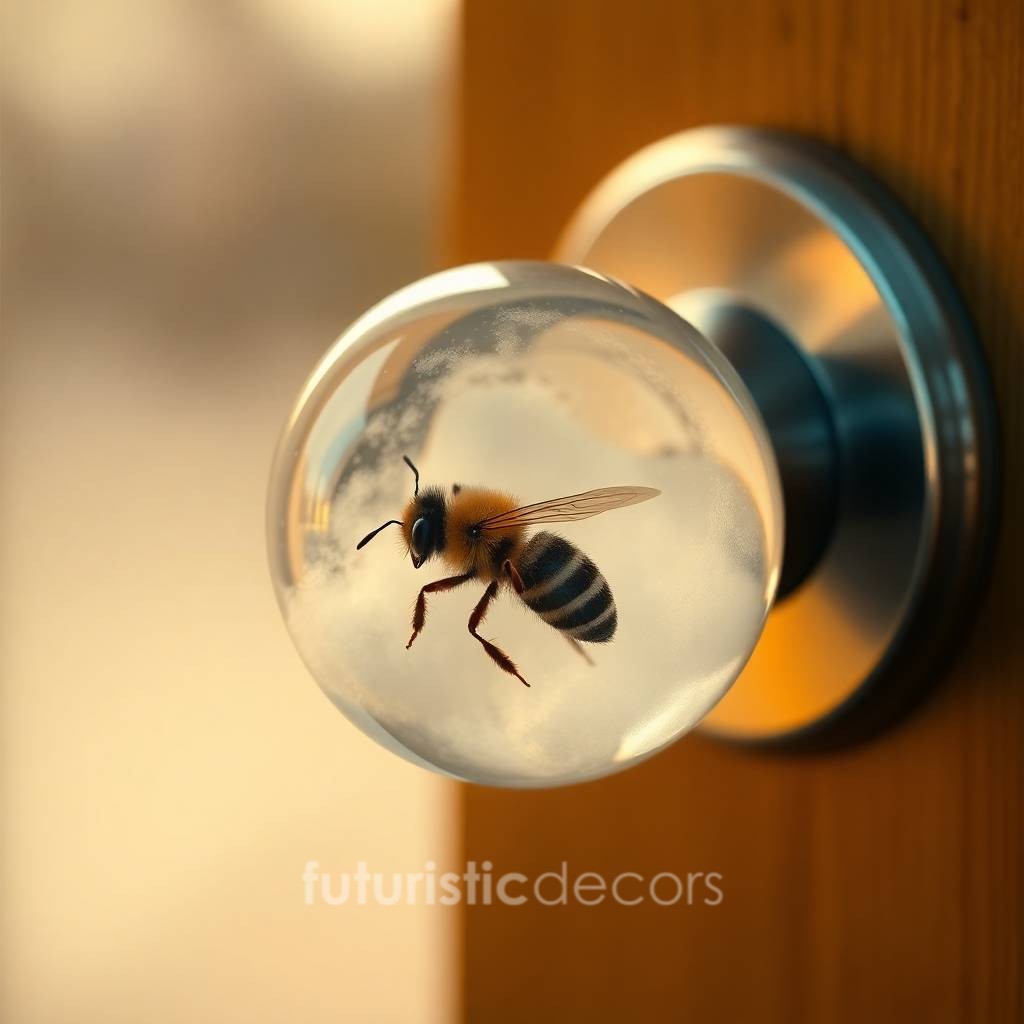
Looking Ahead: Innovations on the Horizon
The future of Insect Doorknobs is brimming with possibilities. As technology continues to evolve, we can expect to see further innovations in the materials used, the sophistication of the micro-environments, and the integration of smart technology. Imagine doorknobs that not only house living insects but also communicate with other smart home devices, adjusting lighting and temperature to enhance the well-being of their tiny inhabitants.
Research and development in the fields of biomimicry, material science, and environmental engineering are likely to drive the next wave of innovations. Future iterations of Insect Doorknobs may incorporate advanced features such as:
- Self-Cleaning Mechanisms: Utilizing nanotechnology to maintain hygiene and reduce the need for manual intervention.
- Interactive Displays: Integrating sensors and LED lighting that respond to environmental changes, providing a visual representation of the microhabitat’s health.
- Customizable Ecosystems: Allowing users to choose different insect species and micro-environment settings based on personal preferences and aesthetic goals.
These advancements promise to further blur the boundaries between art, technology, and nature, ensuring that Insect Doorknobs remain at the forefront of futuristic decor.
Practical Applications and Considerations
Residential and Commercial Uses
Insect Doorknobs are finding applications in a variety of settings, ranging from residential homes to corporate offices and public installations. In residential settings, they can serve as an unexpected yet harmonious complement to nature-themed decor, offering residents a daily reminder of the beauty and complexity of life. For commercial spaces, especially those in industries related to sustainability, biotechnology, or modern art, Insect Doorknobs can be used to create a unique brand identity—one that signals innovation, environmental awareness, and a commitment to pushing the boundaries of design.
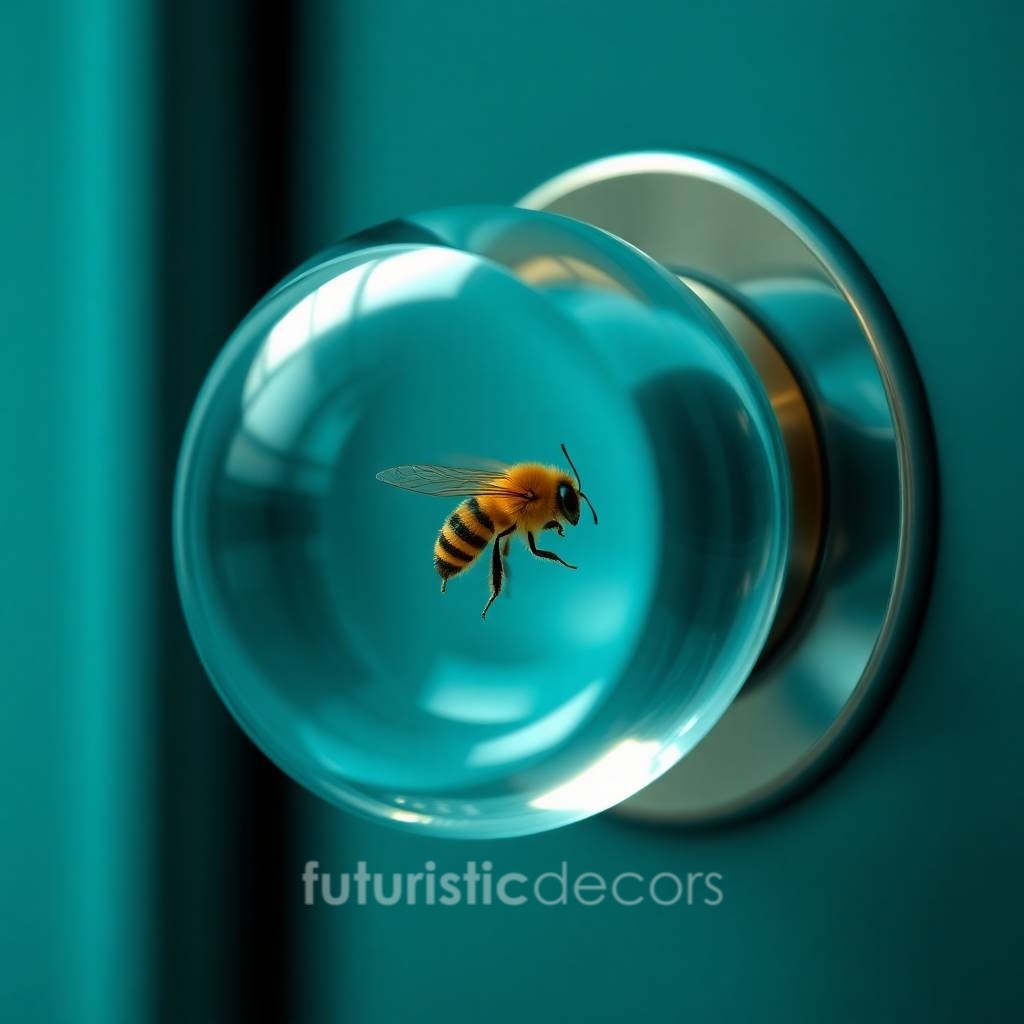
In museums and galleries, these doorknobs have become a subject of interest, sparking discussions about the intersections of art and science. Curators appreciate how these objects challenge traditional narratives about living organisms and human creativity, positioning Insect Doorknobs as both decorative pieces and educational tools.
Maintenance and Longevity
One of the critical factors in the widespread adoption of Insect Doorknobs is the ease of maintenance and the longevity of the product. Designers have addressed this issue by developing modular designs that allow for regular upkeep without compromising the aesthetic integrity of the doorknob. For instance, detachable components make it easier to clean the interior and replace nutrients or water supplies as needed. This thoughtful design ensures that the living component remains healthy and that the overall product retains its visual appeal over time.
For those interested in incorporating Insect Doorknobs into their homes or businesses, it is important to work with reputable manufacturers who adhere to strict ethical and technical standards. Regular maintenance, provided by trained professionals or through user-friendly design features, is essential to ensure the longevity of both the insects and the doorknob structure.
The Broader Implications of Insect Doorknobs
Challenging Conventional Norms
Insect Doorknobs force us to question the conventional boundaries between life and art, nature and technology. In a society where objects are increasingly designed for convenience and efficiency, these doorknobs stand as a reminder of the wonder inherent in the natural world. They encourage us to look beyond the mundane and appreciate the intricate beauty of life, even in its smallest forms. This paradigm shift has profound implications for how we design products, create art, and interact with our environment on a daily basis.
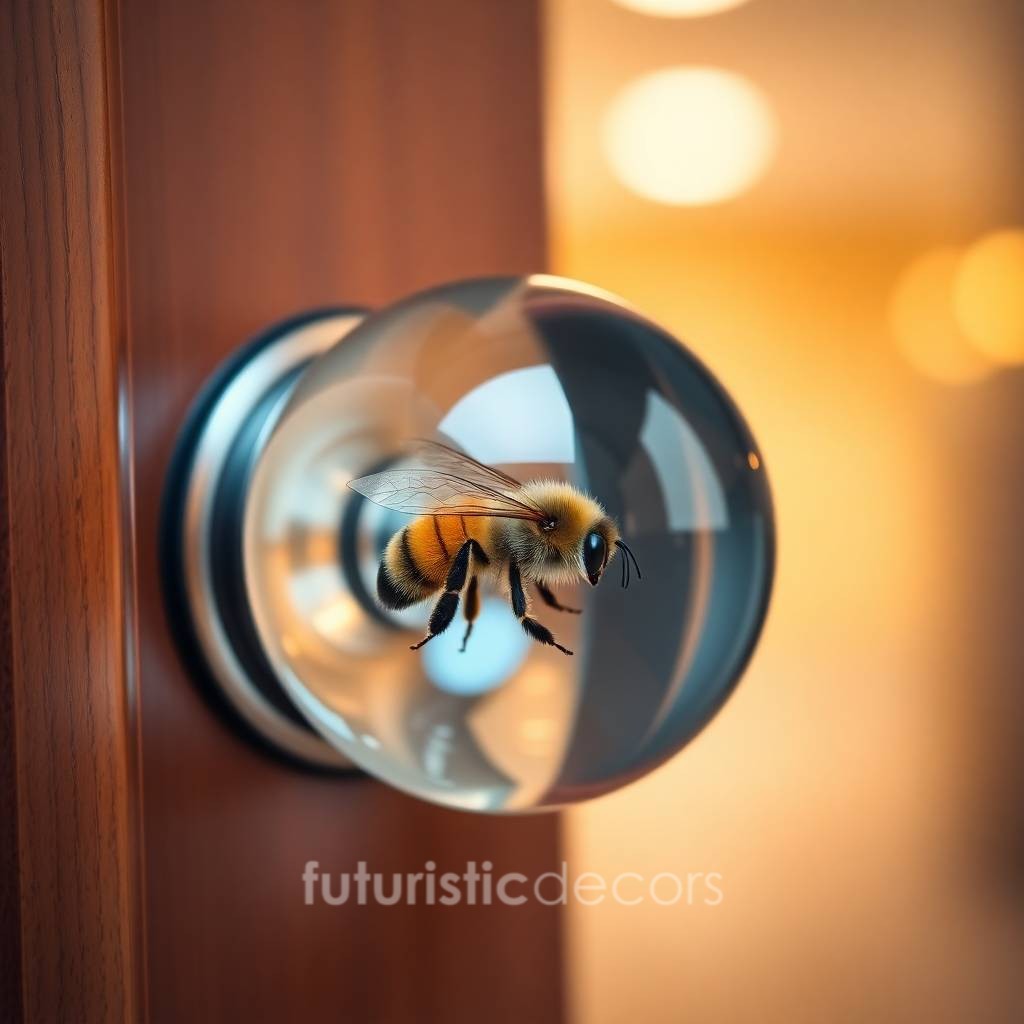
The concept of Insect Doorknobs invites a deeper conversation about the integration of living elements into our built environments. It challenges the traditional notion that nature and technology must exist in separate spheres, proposing instead that they can coexist harmoniously. This synthesis of biology and design opens up new avenues for innovation, encouraging designers to rethink the potential of everyday objects and consider how they might serve as conduits for a more sustainable, interconnected future.
Inspiring Future Generations
Perhaps one of the most exciting aspects of Insect Doorknobs is their potential to inspire future generations of designers, engineers, and environmentalists. By showcasing the beauty and complexity of life in unexpected places, these doorknobs can spark curiosity and creativity in young minds. They serve as a tangible example of how technology and nature can be integrated in ways that are both functional and profoundly beautiful.
Educational institutions and research centers have already taken note of this innovative approach. Workshops and seminars that explore the science behind Insect Doorknobs are becoming increasingly popular, fostering a new generation of thinkers who are not afraid to challenge the status quo. These discussions are paving the way for future innovations that may well redefine our relationship with the natural world.
Insect Doorknobs are not just a novelty or a passing fad. They represent a profound shift in our approach to design, one that values the interplay between life and technology and honors the delicate balance that sustains our natural world. As the movement gains momentum and more designers embrace this visionary concept, the future of interior decor looks both exciting and deeply connected to the life that thrives beyond the surface of our built environments.
Embracing the ethos of Insect Doorknobs means embracing a future where every object tells a story—a story of beauty, innovation, and the eternal dance of nature and technology. It is a future in which our surroundings are not just inert backdrops, but vibrant, living canvases that reflect our commitment to a world that is as dynamic and diverse as the creatures that inhabit it.
In conclusion, the journey of Insect Doorknobs from a radical idea to a celebrated design trend is a testament to the transformative power of creativity. It challenges us to rethink our relationship with the natural world, to see beauty in the smallest details, and to embrace innovation with a deep respect for life. As we continue to explore the intersection of art, science, and nature, Insect Doorknobs stand as a beacon of what is possible when we dare to dream, innovate, and create a future where every element of our environment is infused with wonder.


